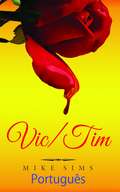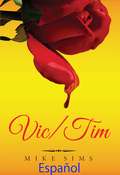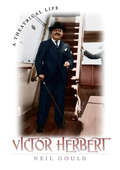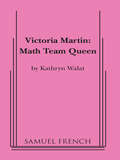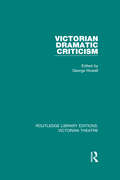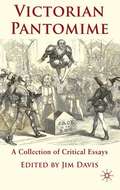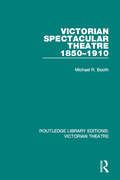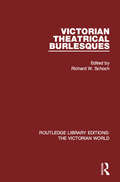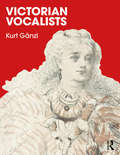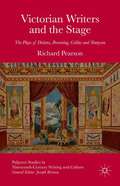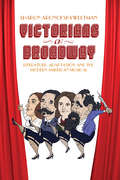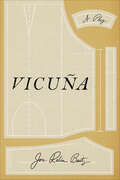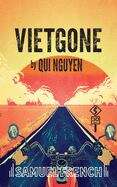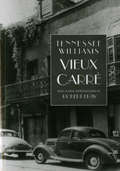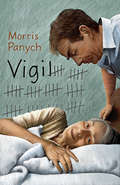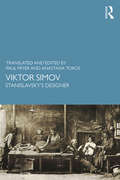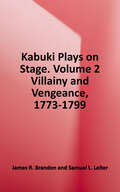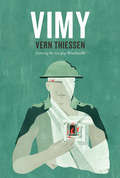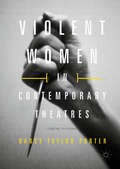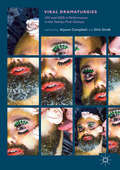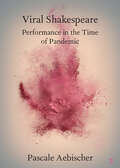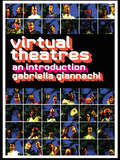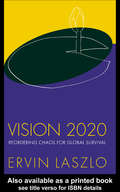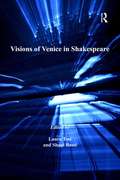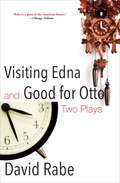- Table View
- List View
Vic e Tim
by Mike Sims Alessandra MartinsO livro original que iniciou a série, a história de Vickie e Tim. Vickie é uma executiva por profissão, mas sua personalidade é incrivelmente esperta, criativa e letal. Com a bela aparência de uma rosa vermelha e olhos fascinantes como uma violeta, ela possui espinhos para aqueles não forem cuidadosos. As adversidades da vida a fizeram vítima, entretanto isso apenas fortaleceu suas aptidões para sair vitoriosa diante de pessoas e situações. Ela é fisicamente forte e possui um intelecto habilidoso, e aqueles que caem em suas garram recebem um método de tratamento específico. Em Vic e Tim nós acompanhamos sua jornada por territórios e relacionamentos de uma maneira diferente. Ela oferece seu humor pesado e muitas vezes seu tipo de justiça irônico para algumas pessoas, salvando-as no processo. Um heroína relutante, uma Valquíria que faz o que acha necessário sem a fama ou fortuna. No entanto, ela acaba descobrindo que as vidas que ela tenta mudar também a modificam.
Vic/Tim
by Mike Sims MARÍA GABRIELA GUZMÁN MIGUELVickie es una ejecutiva corporativa de carrera, con una personalidad brillante, creativa y letal. Es como una rosa roja, de apariencia hermosa, y ojos que se asemejan a la flor de la violeta, pero llena de espinas para los que no tienen cuidado. A pesar de que las adversidades de la vida la han convertido en víctima, también la ayudaron a fortalecer las habilidades que le permiten salir airosa de diferentes situaciones con otras personas. Ella es fuerte desde el punto de vista físico y brillante desde el punto de vista intelectural y aquellos que entran en su radar obtienen un tratamiento especial. VÍC-TIM-AS es un libro que recorre su viaje a través situaciones y relaciones nuevas. En él, ella despliega su humor negro y su paradógico estilo de justicia sobre algunos, mientras salva a otros en el proceso. Una heroína reacia, como una Valquiria que hace lo que piensa que es necesario sin sacar provecho ni hacer alarde de ello. Y aprende que las vidas que ella intenta modificar, también modifican la suya.
Victor Herbert: A Theatrical Life
by Neil GouldVictor Herbert is one of the giants of American culture. As a musician, conductor, and, above all, composer, he touched every corner of American musical life at the turn of the century, writing scores of songs, marches, concerti, and other works. But his most enduring legacy is on a different kind of stage, as one of the grandfathers of the modern musical theater.Now, Victor Herbert has the biography he deserves. Neil Gould draws on his own experience as a director, producer, and scholar to craft the first comprehensive portrait in fifty years of the Irish immigrant whose extraordinary talents defined the sounds of a generation and made contemporary American music possible.Mining a wealth of sources—many for the first time—Gould provides a fascinating portrait of Herbert and his world. Born in Dublin in 1859, Herbert arrived in the United States in 1886. From his first job in the orchestra pit of the Metropolitan Opera, Herbert went on to perform in countless festivals and concerts, and conduct the Pittsburgh Orchestra. In 1894, he composed his first operetta, Prince Ananias, and by the time of his death in 1924, he’d composed forty-two more—many of them, such as Naughty Marietta, spectacular Broadway hits. Along the way, he also wrote two operas, stage music for the Ziegfeld Follies, and the first full score for a motion picture, The Fall of a Nation.Gould brilliantly blends the musical and the theatrical, classical and popular, the public and the private, in this book. He not only gives a revealing portrait of Herbert the artist, entrepreneur, and visionary, but also recreates the vibrant world of the Herbert’s Broadway. Gould takes us inside the music itself—with detailed guides to each major work and recreations of great performances. He also makes strong connections between Herbert’s breakthrough compositions, such as the operetta Mlle. Modiste, and the later contributions of Rudolf Friml,Sigmund Romberg, Jerome Kern and other giants of the musical theater.As exuberant as Herbert himself, this book is also a chronicle of American popular culture during one of its most creative periods. For anyone enraptured by the sound of the American musical, this book is delightfully required reading.
Victoria Martin: Math Team Queen
by Kathryn WalatFull Length, Comedy Charaters 4 male, 1 female . Unit Set . When uber-popular Vickie Martin joins the all-male math team, chaos theory becomes the rule at Longwood High School. Can this goddess of Pi possibly make the mathletes victorious? Totally."The tale about overcoming odds is surprisingly touching." - Time Out New York"The biggest and best surprise of the season so far ... puts the nerds next to the popular kids as they join forces to prove their worth to the world. Victoria Martin leaves audiences both laughing and cheering." - NYTheatre.com
Victorian Dramatic Criticism (Routledge Library Editions: Victorian Theatre #5)
by George RowellOriginally published in 1971. The Victorian Age was one of popular theatre and increasingly popular journalism. One manifestation of this journalism was the emergence of the dramatic critic from the anonymity and brevity which had previously characterized periodical treatment of the theatre. If Victorian theatre is regarded as existing essentially thirty years before Victoria acceded and continuing until the outbreak of war in 1914, the names of Lamb, Leigh Hunt and Hazlitt at one end, and of Beerbohm and MacCarthy at the other, can be added to a list that includes Lewes, James, Archer, Walkley, Shaw and Montague. All these writers, and others less famous, are represented in this selection. By selecting the articles on the basis of the play in performance, rather than the play as literature, and by arranging them according to various aspects of the theatrical process, this book builds up a skilful and lively picture of the contemporary theatre at work, in the words of its leading commentators. The anthology successfully conveys the qualities of abundance and vitality to characteristic of Victorian theatre.
Victorian Pantomime: A Collection of Critical Essays
by Jim DavisFeaturing contributions by new and established nineteenth-century theatre scholars, this collection of critical essays is the first of its kind devoted solely to Victorian pantomime. It takes us through the various manifestations of British pantomime in the Victorian period and its ambivalent relationship with Victorian values.
Victorian Spectacular Theatre 1850-1910 (Routledge Library Editions: Victorian Theatre #3)
by Michael R. BoothOriginally published in 1981. This study concentrates on one aspect of Victorian theatre production in the second half of the nineteenth century – the spectacular, which came to dominate certain kinds of production during that period. A remarkably consistent style, it was used for a variety of dramatic forms, although surrounded by critical controversy. The book considers the theories and practice of spectacle production as well as the cultural and artistic movements that created the favourable conditions in which spectacle could dominate such large areas of theatre for so many years. It also discusses the growth of spectacle and the taste of the public for it, examining the influence of painting, archaeology, history, and the trend towards realism in stage production. An explanation of the working of spectacle in Shakespeare, pantomime and melodrama is followed by detailed reconstructions of the spectacle productions of Irving’s Faust and Beerbohm Tree’s King Henry VIII.
Victorian Theatrical Burlesques (Routledge Library Editions: The Victorian World)
by Richard W. SchochFirst published in 2003. Wildly popular in their own day, Victorian burlesques are now little read, scarcely studied, and never performed. Giving long overdue emphasis to an unjustly neglected theatrical tradition, this critical edition - the first to focus on Victorian burlesques of Victorian plays - represents a valuable scholarly tool for students and scholars of modern drama, theatre history, and nineteenth-century popular culture. Victorian Theatrical Burlesques includes a 'state-of-the-art' introduction which provides a general overview of theatrical burlesques in the Victorian era, emphasising performance history. Sustained reference is made to burlesques other than those presented in the anthology. Through its general introduction, prefaces and annotations to individual plays, checklist of burlesque plays, and bibliography, the unique volume allows both specialist and non-specialist readers to see Victorian burlesques as a rich historical record of shifting attitudes toward drama and the theatre.
Victorian Vocalists
by Kurt GanzlVictorian Vocalists is a masterful and entertaining collection of 100 biographies of mid- to late-19th-century singers and stars. Kurt Gänzl paints a vivid picture of the Victorian operatic and concert world, revealing the backgrounds, journeys, successes, failures and misdemeanours of these singers. This volume is not only an outstanding reference work for anyone interested in vocalists of the era, but also a compelling, meticulously researched picture of life in the vast shark tank that was Victorian music.
Victorian Writers and the Stage
by Richard PearsonThis book comprises a study of the plays of Dickens, Browning, Wilkie Collins and Tennyson, alongside the fiction and periodical writings of Thackeray and others. These major Victorian writers authored several professional plays, but why has their achievement been overlooked? Victorian Writers and the Stage brings together comprehensively, for the first time, the professionally performed plays of a group of well-known authors – some of which plays enjoyed long and successful seasons,but all of which have been largely forgotten. The author examines the goal of these writers to become part of an expanding theatrical industry and the problems they encountered in risking their reputations on a literature felt by many to be vulgar and illegitimate. A wealth of new detail carefully positions the plays within the context of the changing Victorian theatre industry and the great battle between the Major and Minor theatres for the future of the modern stage.
Victorians on Broadway: Literature, Adaptation, and the Modern American Musical
by Sharon Aronofsky WeltmanBroadway productions of musicals such as The King and I, Oliver!, Sweeney Todd, and Jekyll and Hyde became huge theatrical hits. Remarkably, all were based on one-hundred-year-old British novels or memoirs. What could possibly explain their enormous success? Victorians on Broadway is a wide-ranging interdisciplinary study of live stage musicals from the mid- to late twentieth century adapted from British literature written between 1837 and 1886. Investigating musical dramatizations of works by Charles Dickens, Charlotte Brontë, Christina Rossetti, Robert Louis Stevenson, and others, Sharon Aronofsky Weltman reveals what these musicals teach us about the Victorian books from which they derive and considers their enduring popularity and impact on our modern culture.Providing a front row seat to the hits (as well as the flops), Weltman situates these adaptations within the history of musical theater: the Golden Age of Broadway, the concept musicals of the 1970s and 1980s, and the era of pop mega-musicals, revealing Broadway’s debt to melodrama. With an expertise in Victorian literature, Weltman draws on reviews, critical analyses, and interviews with such luminaries as Stephen Sondheim, Polly Pen, Frank Wildhorn, and Rowan Atkinson to understand this popular trend in American theater. Exploring themes of race, religion, gender, and class, Weltman focuses attention on how these theatrical adaptations fit into aesthetic and intellectual movements while demonstrating the complexity of their enduring legacy.
Vicuña: A Play
by Jon Robin BaitzA play centering on the tensions between a political demagogue and the tailor who makes his suitIn his Upper East Side atelier, a bespoke tailor, Anselm Kassar, is persuaded by the vulgar real estate mogul turned presidential candidate Kurt Seaman to make him the perfect suit. A suit to “stun them” at the final debate before the election, a suit for him to wear while he takes on his unnamed female opponent. Kassar agrees to make Seaman a suit with magical powers of persuasion, to allow him to “close the deal with the American people.”Over the course of three fittings for this exorbitantly expensive and totemic vicuña suit, Seaman cajoles and spars with the tailor and his young Muslim apprentice, Amir. Amir’s challenges to Seaman and Seaman’s daughter Srilanka over the dangerously xenophobic and inflammatory rhetoric coming out of the campaign make the fittings increasingly volatile in the genteel atelier. Vulnerabilities are exploited masterfully by the candidate, in the manner of a true sociopath with a perfect instinct for other people’s weaknesses. Coming out of an election season that laid bare the rage in much of America, Jon Robin Baitz’s Vicuña is an astute satire of what—or who—it takes to bring those anxieties to the fore.
Vietgone
by Qui NguyenAn all-American love story about two very new Americans. It's 1975. Saigon has fallen. He lost his wife. She lost her fiancé. But now in a new land, they just might find each other. <p><p> Using his uniquely infectious style The New York Times calls "culturally savvy comedy" - and skipping back and forth from the dramatic evacuation of Saigon to the here and now - playwright Qui Nguyen gets up-close-and-personal to tell the story that led to the creation of...Qui Nguyen.
Vieux Carre
by Tennessee Williams Robert BrayBorn out of the journals the playwright kept at the time, Tennessee Williams's Vieux Carré is not emotion recollected in tranquility, but emotion re-created with all the pain, compassion, and wry humor of the playwright's own 1938-39 sojourn in the New Orleans French Quarter vividly intact. The drama takes it form from the shifting scenes of memory, and Williams's surrogate self invites us to focus, in turn, on the various inhabitants or his dilapidated rooming house in the Vieux Carré: the comically desperate landlady, Mrs. Wire; Jane, a properly brought-up young woman from New York making at last grab at pleasure with Tye, the vulgar but appealing strip-joint barker; two decayed gentlewomen politely starving in the garret; and the dying painter Nightingale, who tries to teach the young writer something about love--both of the body and of the heart. This is a play about the education of the artist, and education in loneliness and despair, in giving and not giving, but most of all in seeing, hearing, feeling, and learning that "writers are shameless spies," who pay dearly for their knowledge and who cannot forget. Building on two decades of Williams scholarship since Vieux Carré was originally published, Robert Bray, editor of The Tennessee Williams Annual Review, has provided a new introduction for this edition, giving the most authoritative account yet of its background and genesis.
Vigil
by Morris PanychA man returns after thirty years to sit with a relative on her deathbed. Kemp's problem is: she's not dying fast enough. Through Kemp's own errors and inattentiveness, the visit that he thinks will take a day or two stretches into a year. A play of mistaken identity, twisted circumstance, and surprising turns, this is one Vigil worth keeping.
Viktor Simov: Stanislavsky’s Designer
by Paul Fryer Anastasia TorosViktor Simov is the first English-language biography of Konstantin Stanislavsky’s principal scenic designer at the Moscow Art Theatre from the company’s formation in 1898. His ground-breaking work included the designs for the premieres of Anton Chekhov’s major stage plays, and his approach to theatre design still influences contemporary scenography. Translated from the original Russian text written by author, editor, and literary critic Yuri Ivanovich Nekhoroshev, the book provides a revealing insight into the staging and technical practices of one of the world’s most influential theatre companies. Supported by 60 illustrations representing the full range of Simov’s designs, this volume provides a historical account of Simov’s career and a vivid description and critical assessment of his work. The book traces the artist’s development from his early years as a painter to his later experiments in early silent film design, including his work for the classic Russian science fiction film Aelita, Queen of Mars (1924). Written for theatre scholars and students of Scenic Design and Drama courses, Viktor Simov: Stanislavsky’s designer re-establishes Simov as one of the most influential theatre designers of the 20th century.
Villainy and Vengeance, 1773-1799 (Kabuki Plays On-Stage #2)
by James R. Brandon Samuel L. LeiterKabuki Plays On Stage represents a monumental achievement in Japanese theatre studies, being the first collection of kabuki play translations to be published in twenty-five years. Fifty-one plays, published in four volumes, vividly trace kabuki's changing relations to Japanese society during the premodern era. <p><p>Volume 1 consists of thirteen plays that showcase early kabuki's scintillating and boisterous styles of performance and illustrates the contrasting dramatic techniques cultivated by actors in Edo (Tokyo) and Kamigata (Osaka and Kyoto). The twelve plays translated in Volume 2 cover a brief period, but one that saw important developments in kabuki architecture, acting, dance, and the manipulation of characters and themes. <p><p>As the series title indicates, the plays were translated to capture the vivacity of performances on stage. The translations, each accompanied by a thorough introduction that contextualizes the play, are based not only on published texts, but performance scripts and the study of the plays as they are performed in theatres today. <p><p>Each volume is lavishly illustrated with rare woodblock prints in full color of Tokugawa- and Meiji-period productions as well as color and black-and-white photographs of contemporary performances.
Vimy
by Vern ThiessenFrance, 1917. Four wounded Canadian soldiers recover in a field hospital in the wake of the battle for Vimy Ridge, waiting to find out where they’ll be sent next: back home or back to the front. Along with a young nurse from Nova Scotia, they share their stories, reasons for fighting, and treasured memories. In Vimy, Governor General’s Literary Award–winner Vern Thiessen brings us a classic play that is not about war, but a reflection of the everyday lives of soldiers—their hopes and their dreams—and how actions can define individuals and nations. In the brand-new piece Bluebirds, Thiessen brings to light the stories of three Canadian nurses who crossed oceans to take care of others in the war. Bonding over their duties and patients, the nurses keep up a positive atmosphere, even as the front line draws closer to their field hospital.
Violent Women in Contemporary Theatres
by Nancy Taylor PorterThis book brings together the fields of theatre, gender studies, and psychology/sociology in order to explore the relationships between what happens when women engage in violence, how the events and their reception intercept with cultural understandings of gender, how plays thoughtfully depict this topic, and how their productions impact audiences. Truthful portrayals force consideration of both the startling reality of women's violence -- not how it's been sensationalized or demonized or sexualized, but how it is -- and what parameters, what possibilities, should exist for its enactment in life and live theatre. These women appear in a wide array of contexts: they are mothers, daughters, lovers, streetfighters, boxers, soldiers, and dominatrixes. Who they are and why they choose to use violence varies dramatically. They stage resistance and challenge normative expectations for women. This fascinating and balanced study will appeal to anyone interested in gender/feminism issues and theatre.
Viral Dramaturgies: Hiv And Aids In Performance In The Twenty-first Century
by Alyson Campbell Dirk GindtThis book analyses the impact of HIV and AIDS on performance in the twenty-first century from an international perspective. It marks a necessary reaffirmation of the productive power of performance to respond to a public and political health crisis and act as a mode of resistance to cultural amnesia, discrimination and stigmatisation. It sets out a number of challenges and contexts for HIV and AIDS performance in the twenty-first century, including: the financial interests of the pharmaceutical industry; the unequal access to treatment and prevention technologies in the Global North and Global South; the problematic division between dominant (white, gay, urban, cis-male) and marginalised narratives of HIV; the tension between a damaging cultural amnesia and a potentially equally damaging partner ‘AIDS nostalgia’; the criminalisation of HIV non-disclosure; and, sustaining and sustained by all of these, the ongoing stigmatisation of people living with HIV.This collection presents work from a vast range of contexts, grouped around four main areas: women’s voices and experiences; generations, memories and temporalities; inter/national narratives; and artistic and personal reflections and interventions.
Viral Shakespeare: Performance in the Time of Pandemic (Elements in Shakespeare Performance)
by Pascale AebischerThis Element offers a first-person phenomenological history of watching productions of Shakespeare during the pandemic year of 2020. The first section of the Element explores how Shakespeare 'went viral' during the first lockdown of 2020 and considers how the archival recordings of Shakespeare productions made freely available by theatres across Europe and North America impacted on modes of spectatorship and viewing practices, with a particular focus on the effect of binge-watching Hamlet in lockdown. The Element's second section documents two made-for-digital productions of Shakespeare by Oxford-based Creation Theatre and Northern Irish Big Telly, two companies who became leaders in digital theatre during the pandemic. It investigates how their productions of The Tempest and Macbeth modelled new platform-specific ways of engaging with audiences and creating communities of viewing at a time when, in the UK, government policies were excluding most non-building-based theatre companies and freelancers from pandemic relief packages.
Virtual Theatres: An Introduction
by Gabriella GiannachiThe first full-length book of its kind to offer an investigation of the interface between theatre, performance and digital arts, Virtual Theatres presents the theatre of the twenty-first century in which everything - even the viewer - can be simulated. In this fascinating volume, Gabriella Giannachi analyzes the aesthetic concerns of current computer-arts practices through discussion of a variety of artists and performers including: * blast Theory* Merce Cunningham* Eduardo Kac* forced entertainment* Lynn Hershman* Jodi Orlan* Guillermo Gómez-Peña* Marcel-lí Antúnez Roca* Jeffrey Shaw* Stelarc. Virtual Theatres not only allows for a reinterpretation of what is possible in the world of performance practice, but also demonstrates how 'virtuality' has come to represent a major parameter for our understanding and experience of contemporary art and life.
Vision 2020: Reordering Chaos For Global Survival
by Ervin LaszloThis revised edition of the classic text of the period provides both the student and the specialist with an informative account of post-Roman English society.
Visions of Venice in Shakespeare (Anglo-Italian Renaissance Studies)
by Laura Tosi Shaul BassiDespite the growing critical relevance of Shakespeare's two Venetian plays and a burgeoning bibliography on both The Merchant of Venice and Othello, few books have dealt extensively with the relationship between Shakespeare and Venice. Setting out to offer new perspectives to a traditional topic, this timely collection fills a gap in the literature, addressing the new historical, political and economic questions that have been raised in the last few years. The essays in this volume consider Venice a real as well as symbolic landscape that needs to be explored in its multiple resonances, both in Shakespeare's historical context and in the later tradition of reconfiguring one of the most represented cities in Western culture. Shylock and Othello are there to remind us of the dark sides of the myth of Venice, and of the inescapable fact that the issues raised in the Venetian plays are tremendously topical; we are still haunted by these theatrical casualties of early modern multiculturalism.
Visiting Edna and Good for Otto: Two Plays
by David RabeTwo plays exploring the struggle of mental illness by the Tony Award–winning “giant of American theater” and author of Hurlyburly (Chicago Tribune). Good for Otto, which premiered in October 2015 at the Gift Theatre in Chicago, is a “sprawling drama of mental illness” in which “Mr. Rabe digs into his subject with a depth that almost feels bottomless.” Drawing on material from Undoing Depression by psychotherapist Richard O’Connor, it explores the lives of a therapist and his many patients, all trying to navigate personal trauma (Charles Isherwood, The New York Times). Visiting Edna, which premiered in September 2016 at the Steppenwolf Theatre in Chicago, is a drama of “deeply searing power” about the bond between mother and son. As Edna faces a short future plagued by her many illnesses—and a cancer that looms so large it becomes another character—she and her adult son struggle to communicate about their shared past as they contemplate the future (Variety). Taken together, the plays offer a satisfying glimpse into “Rabe’s theatrical universe . . . at once vivid and mysterious, a pageant and a puzzle” of contemporary American life (John Lahr, The New Yorker). “Many would list [Rabe] among the very greatest of living playwrights.” —Chris Jones, Chicago Tribune
